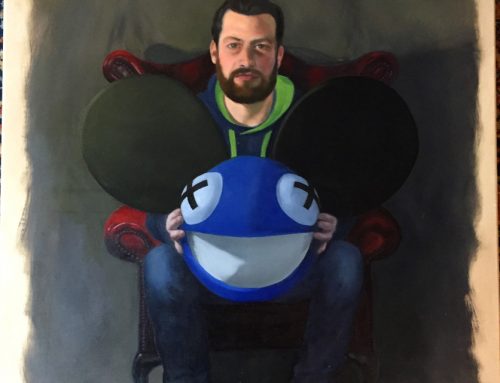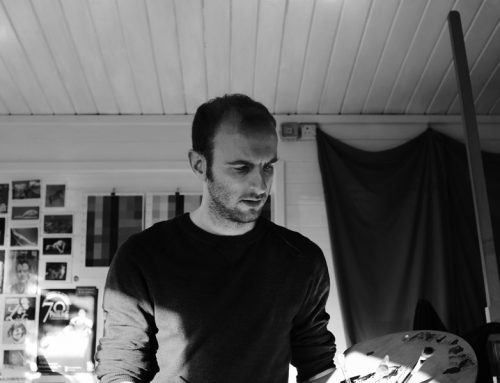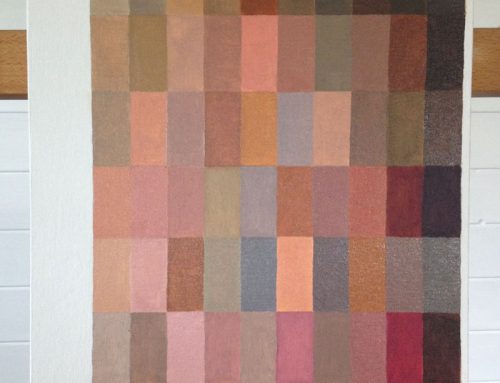To help broaden my portfolio I’ve recently been studying the principles of sight-size portraiture and alla prima painting, culminating in a portrait masterclass at LARA (The London Atelier of Representational Art) earlier this month.
In summary, sight-size portraiture is a method of painting whereby the artist makes most observations of the sitter from a distance, allowing both the model and painting to be observed side-by-side.
Alla prima, is Italian meaning ‘at first attempt’ or ‘at once’ and refers to painting wet layers into layers that are still wet. The process is also often referred to as painting wet-on-wet.
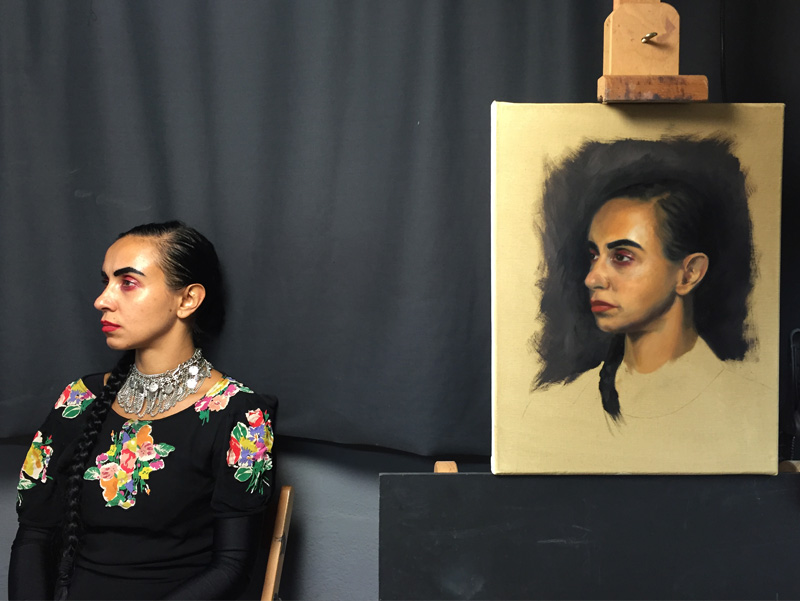
The model – Maya and sight-size portrait study in progress
My portfolio to date has been made up of academic portraits, built up through many layers of oil paint. Created in multiple sessions, I allow a layer to dry before refining the work further in the next layer or glaze.
Often taking hundreds of hours to complete, these academic works are a real labour of love as I strive to create a true likeness while accurately capturing details important to the sitter such as medals, uniforms and wedding attire.
Prior to the class I experimented with a number of charcoal and oil studies using the sight-size and alla prima techniques (some of which I’ll try and share in a future post). The masterclass gave me the opportunity to dedicate some concentrated time to exploring these methods with the guidance of an expert tutor in the atelier environment.
Portrait Painting Masterclass with Tom Greenwood
The class was ran by the brilliant Tom Greenwood. It was an absolute pleasure painting alongside the artist and quizzing him on all things relating to alla prima and sight-size portraiture.
I learnt a great deal during the classes, especially around the compression of value and the different anatomical planes of the head.
The key stages of the class were broken down as follows. All drawings and paintings were made from life from the model.
1) Charcoal Transfer Drawing
The portrait model that I worked from for the week was Maya. We started by working up an accurate transfer drawing in charcoal on paper, using the principles of the sight-size technique to establish the outline and main shapes.
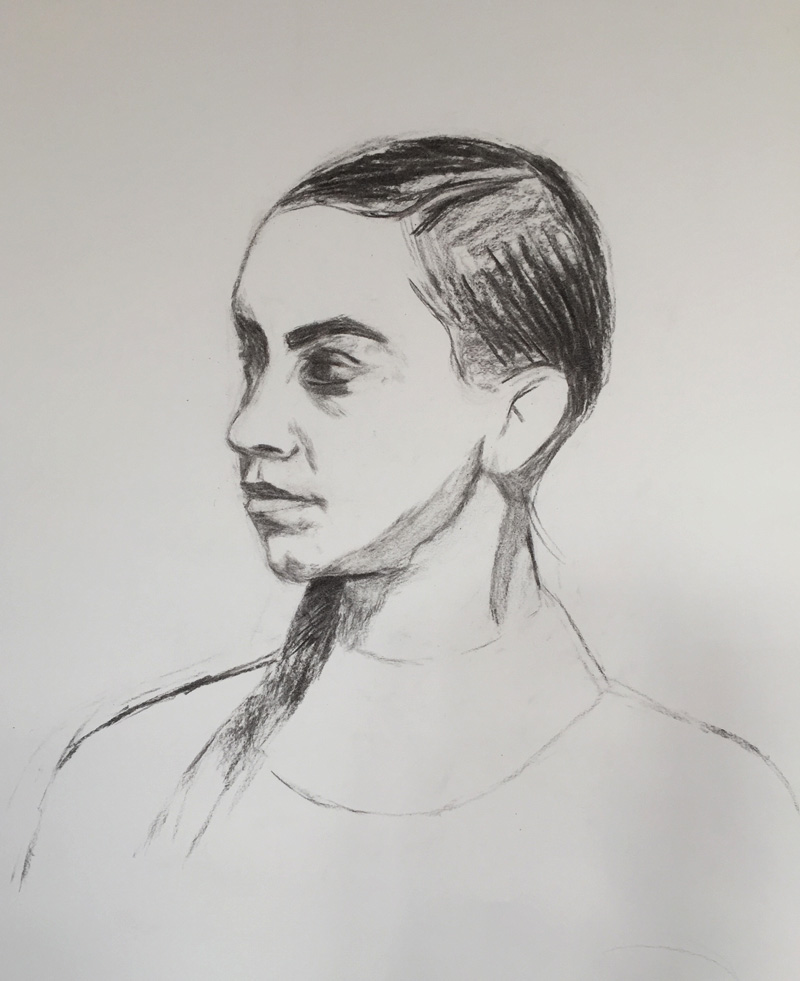
Maya – Charcoal on paper, 18” x 14”
2) Colour Study in Oils
Next we completed a small colour study on canvas board. This quick piece allowed me to work out the compression of values. Establishing the darkest darks first, then the lights before finding the mid values.
Keeping the study loose and painting quickly allowed me to concentrate on the hue, value and chroma of the subject without getting distracted by the accuracy of the drawing.
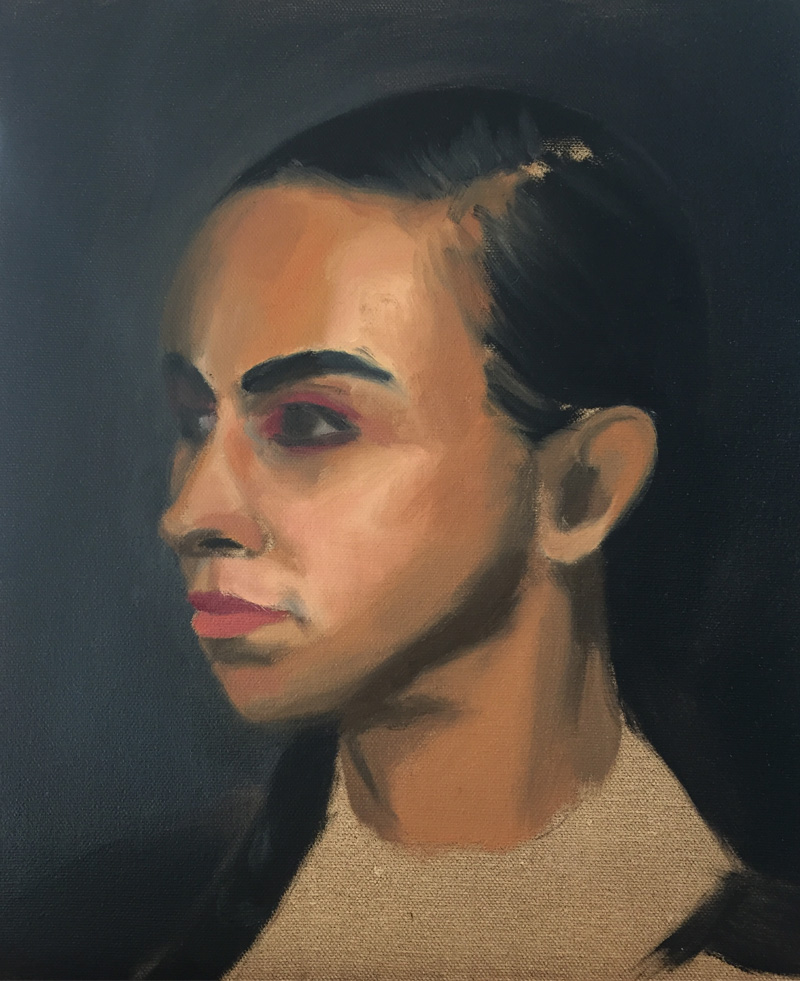
Maya – Oil Colour Study on Canvas Board, 12” x 10”
3) Alla Prima Portrait in Oils
The final stage was to work up the portrait on canvas. Using the charcoal transfer drawing to layout the key outline I then worked up the key values as per the colour study.
If I had more time I would have refined the accuracy of the piece a little further but overall I was really pleased with the compression of values and chroma that I achieved.
The lost and found edges give a sense of depth and ensure the key facial features remain the focal point of the painting.
The week at LARA was brilliant and I’m looking forward to exploring the techniques and theory I picked up further in my work.

Maya – Oil on canvas, 18” x 14”

